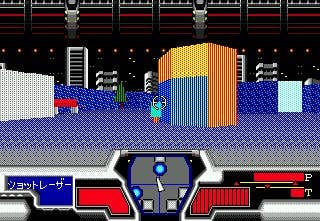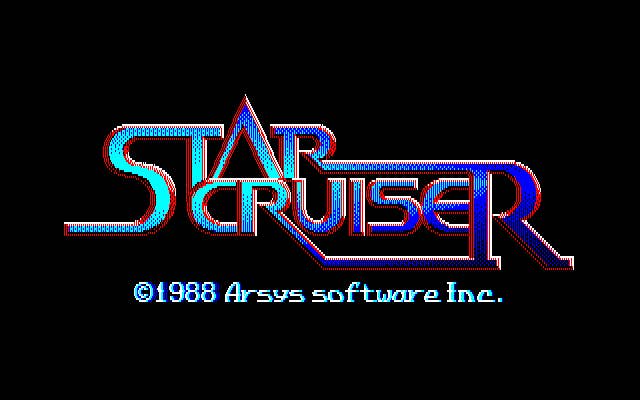Kotori Yoshimura and Star Cruiser: How Twitter Revived a Piece of Japanese Gaming History
An unlikely Twitter campaign unearths a unique chunk of video game history.
This article first appeared on USgamer, a partner publication of VG247. Some content, such as this article, has been migrated to VG247 for posterity after USgamer's closure - but it has not been edited or further vetted by the VG247 team.
In September 2015, Japanese video game developer Kotori Yoshimura asked for a 1000 retweets so that she could start working on a follow-up to Star Cruiser, a cult first-person action RPG shooter released for the PC-88. The 1000 retweets came two years later, driven by a global network of video game lovers on Twitter. It's a feel-good story sure, but it was a long journey for Star Cruiser and Yoshimura to get there.
Kotori Yoshimura (née Katsunori Yoshimura) is the co-founder of the Japanese video game company Technosoft which was best known for Thunder Force, a franchise Hardcore Gaming 101 said stood out among its many shmup compatriots back in the 80s Japanese video game scene.
From there, Yoshimura went on to find Arsys Software where the company started developing games that incorporated early 3D graphics. Some of these games include WiBArM and Reviver for the PC-88. But it was Star Cruiser in 1988 that became the company's most highly-regarded success. Star Cruiser was an action RPG noted for featuring fully 3D polygonal graphics and unique gameplay that switched between first-person shooting gameplay to occasionally playing as a space flight simulator.
Star Cruiser predated 3D graphics in the industry by years, and won several awards from Japanese computer magazines like Best Adventure Game (POPCOM) and Best Special Effects (Oh!X). Star Cruiser also placed third runner-up for Game of the Year (Tetris won that year). Apparently, PlatinumGames' Hideki Kamiya lists Star Cruiser as one of his favorite games.

Unfortunately Star Cruiser never received a proper release abroad. Namco licensed and planned on releasing a North American rendition of the Mega Drive version of Star Cruiser (renamed Star Quest) for the Sega Genesis, but it never actually came out. Funny enough, an English translated ROM hack came out in November 2016, and you can buy a reproduced Star Cruiser Genesis cartridge on Etsy.
Basically, Star Cruiser still lives 30 years after it first came out on the PC-88, but until last month I had never heard of the game or its developer Kotori Yoshimura. It was first brought to my attention after Necrosoft Games' Brandon Sheffield found Yoshimura's 2015 Tweet asking for 1000 retweets to get back into the Star Cruiser development cockpit.
"I found the tweet while working here in Krakow... whenever I get flown out to a conference like this one (this time it was Digital Dragons in Poland), I get the rest of my team together at an Airbnb and we do a bunch of work in the same place," wrote Sheffield in an email. "Usually while working I just put on some YouTube playlists, and this guy, Dustin Odell, has a great series of Sega Genesis/Mega Drive recordings. While listening to these, I kept coming back to the Star Cruiser soundtrack, because it had such a great vibe to it. I knew Star Cruiser, but I hadn't really looked into the history behind it until I kept looping the soundtrack."
Incidentally, the soundtrack for Star Cruiser and its sequel Star Cruiser II were both composed by musician Toshiya Yamanaka. The music, like today, was well received, coming in third for best Theme Music in Oh!X's 1989 video game awards.
"I wound up doing some research about the game, then the company Arsys that made it, and through the process wound up reading about Yoshimura and her story. I went to see if she was on Twitter, because the last Wikipedia entry says 'she joined another company in 2008.' Then I saw her pinned tweet from 2015 saying if she got 1000 RTs she'd start working on a new Star Cruiser-like. I figured I had to make it happen, if she had had such an illustrious yet troubled career. So I basically wrote the whole story down in a series of tweets, and I guess it succeeded!"
After retweeting Yoshimura's original Tweet, Sheffield started a thread translating Yoshimura's career using her Japanese wikipedia page, as well as the Arsys and Technosoft wiki. In the time following Yoshimura's work on 3D games at Arsys, she went on to work with Polyphony Digital to help create the first Gran Turismo for the PlayStation as co-developer (Arsys was renamed Cyberhead at this point).
It was around this time that Yoshimura discovered the she had Gender Dysphoria. She was fired from several game development companies like Treasure as related to "health problems." Despite the setbacks, Yoshimura still ended up working on the MPEG/DVD format and doing optimization work on Intel's Pentium 4 processor.
Sheffield outlines much of these details in his thread, but what about Kotori Yoshimura? What happened after that 1000th retweet that finally arrived two years after the initial tweet?
"Honestly I thought 1000 [retweets] was the bare minimum I needed in order to keep going with this," said Yoshimura in a brief email interview Sheffield helped arrange. "When at first I didn't get anywhere near this number, I was terribly disappointed. But now, I am feeling like I should finally be getting started on this, making new art, music, designs, and some sort of prototype sample, with the feeling that I can now get greater support."
"Being such an experienced developer she sure doesn't need development help from me," said Sheffield who reached out to Yoshimura through Twitter DM shortly after retweeting her. Luckily, even though Yoshimura said she was very busy right now, she agreed to answer some of my questions as long as they weren't too long.

The first question on my mind though was why she decided to revive Star Cruiser nearly 30 years after the game first came out.
"There were two main triggers. One is that people kept making me offers like "hey, don't you want to revive Star Cruiser?" And one of those was quite recent. The other thing is I've been writing a novel called Kouchuu Senchou [lit: "Aircraft Captain"], which I uploaded to [the free novel-sharing site] Sh?setsuka ni Nar? [lit: Let's Become a Novelist]. I sort of wrote it with the intention of it becoming a game, and I thought I could connect these two worlds. The world of Star Cruiser, with the new world I've been making in this novel."
Considering an English translation for Star Cruiser only surfaced seven months ago, it's easy to understand why Star Cruiser is still fresh in the memories of gamers. Really, Star Cruiser was ahead of the curve in terms of early 3D gameplay, it just seems more of a shame that Namco's planned Star Cruiser port never made it outside Japan.
"Even at this point, I haven't come across another game I feel is a true analog to Star Cruiser," said Yoshimura. "The shooting part may be similar to an FPS, but when you take the game as a whole, I don't think there's anything that matches the entire image."
Naturally, that made me wonder what kind of games Yoshimura comes across these days. "Well, I see the rising cost of development for those who want to make huge projects, and on the other hand there's the rise of indies as well, whose quality is increasing," she answered. "Recently in Japan, 'social games' are the thing, but it's 'social' only in name. It feels like most of them are tilted toward just taking money from the customers. Those kinds of games are growing, which is really sad... I'd like to make games that pursue the 'make players happy' angle first and foremost."

As video game companies continue to pursue trends where video games are considered services, it's hard not to look at Star Cruiser and the classic games of those eras as a kind of craft industry, rather than the behemoth size of modern video game production. In a way, the rise of social media is a return to those early offline days.
When Yoshimura first started programming 40 years ago, she says there was no network communication infrastructure for computers, so she relied mainly on magazine articles and reader's columns for new information. "I was active in these offline communities as a general reader, and when I joined the industry I responded to interviews in magazines as much as possible, wrote articles myself, and contributed programs [games] to them," explained Yoshimura.
"When it comes to Star Cruiser, I'd tried this sort of thing many times. For example, at Comic Market [A popular comic convention] in Japan, there aren't so many people selling [games]. So I actually tried to do that myself, several times. But I really didn't have so much time then, and I felt I was really losing sight of what it was I wanted to be doing, so it didn't go too well. I announced a few [games] there. In the current era with Facebook, Twitter, and the like, there are more ways people can see what they want to see, but the basic idea is unchanged."

Yet the thing that's changed the most for Yoshimura isn't necessarily tied to any video game cultural shift or technological trend or advancement. Rather it's the personal changes in her own life. While some of the details are too difficult to discuss, there have been many changes for her since her Comiket and Arsys days.
"For me, the biggest difference is really that I have a partner in my life now, named @marinyan. She helps me in my work, and has really become a strong power in my life," says Yoshimura. "I believe that anything that one person can't do alone, two people can somehow figure out how to do it. This is really why I thought about challenging something like [Star Cruiser] again."
As of currently, Yoshimura is a freelance programmer. While the sudden attention brought on by the resurfacing of a two year old tweet out of the blue has thrust her Star Cruiser project back into focus, she says she's looking for a financial buffer and some free time if she wants to fully embark on the project. She's still updating her game project with the hashtag #???????????? (lit. Make Something Like Star Cruiser, Google Translate says: Make stuff things). Either way, now's a good a time as any for interested parties to reach out to her for work.
As it stands, Kotori Yoshimura's story reminds me a lot about a video game history class I took in college. The class focused a lot on the technological history, often brushing aside the community and culture that helped shaped it, and continues to change and be changed by it. This would have been a much shorter piece if it focused solely on Star Cruiser, but like my bogus video game history course, we risk losing out on history if we only focus on the nuts and bolts, and not the living people behind them.
Credit to Brandon Sheffield who helped research and translate the story.



